A block of mass m is welded with a light spring of stiffness k. The spring is initially relaxed. When the wedge fitted moves with an acceleration a, as shown in figure. 8.60, the block slides through a maximum distance l relative to the wedge. If the coefficient of kinetic friction between the block and the wedges is μ, find the maximum deformation l of the spirng by using work-energy theorem.
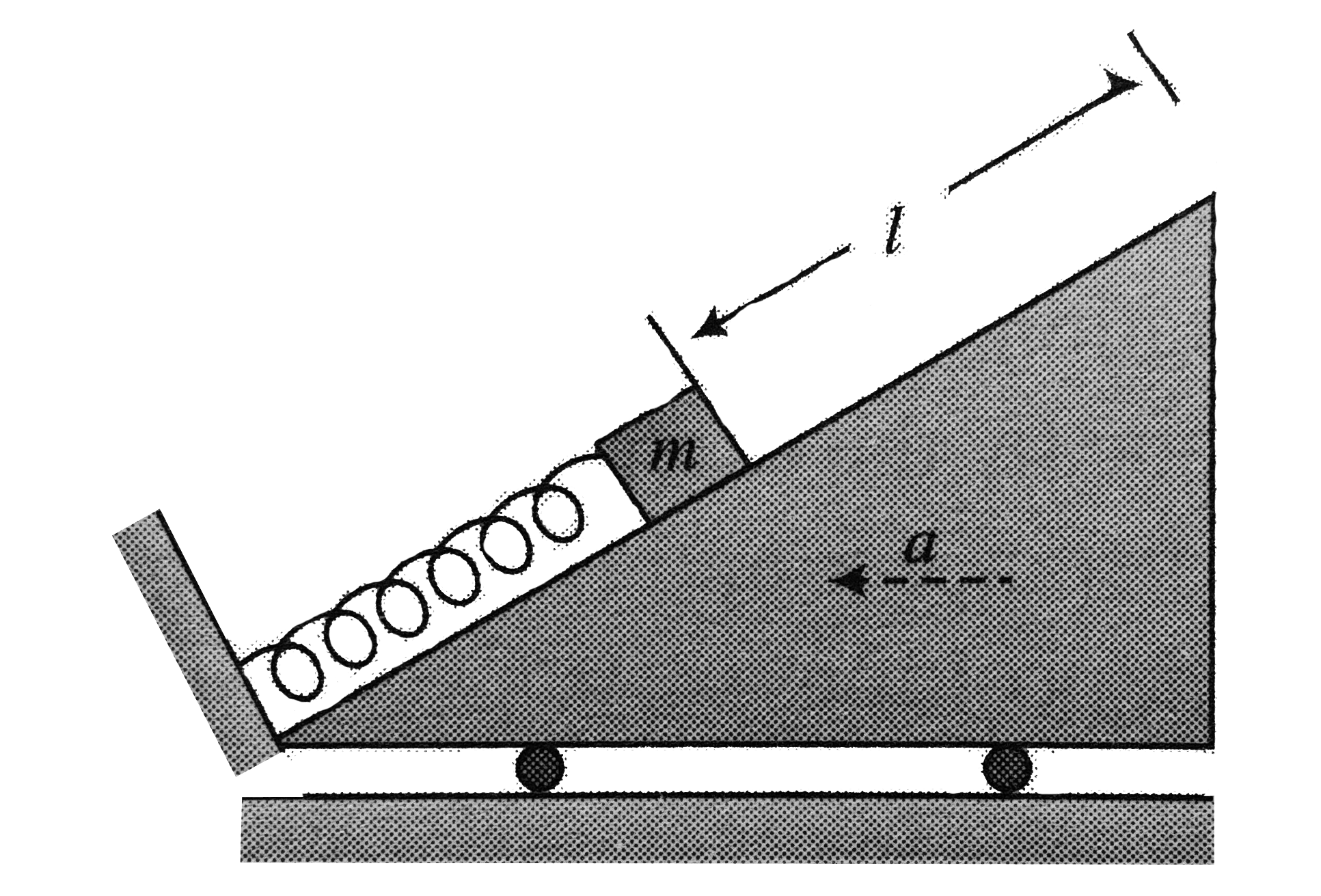
In this case, we are given the block slides through a distance l relative to the wedge. We can apply work-energy theorem from the frame of reference of wedge.
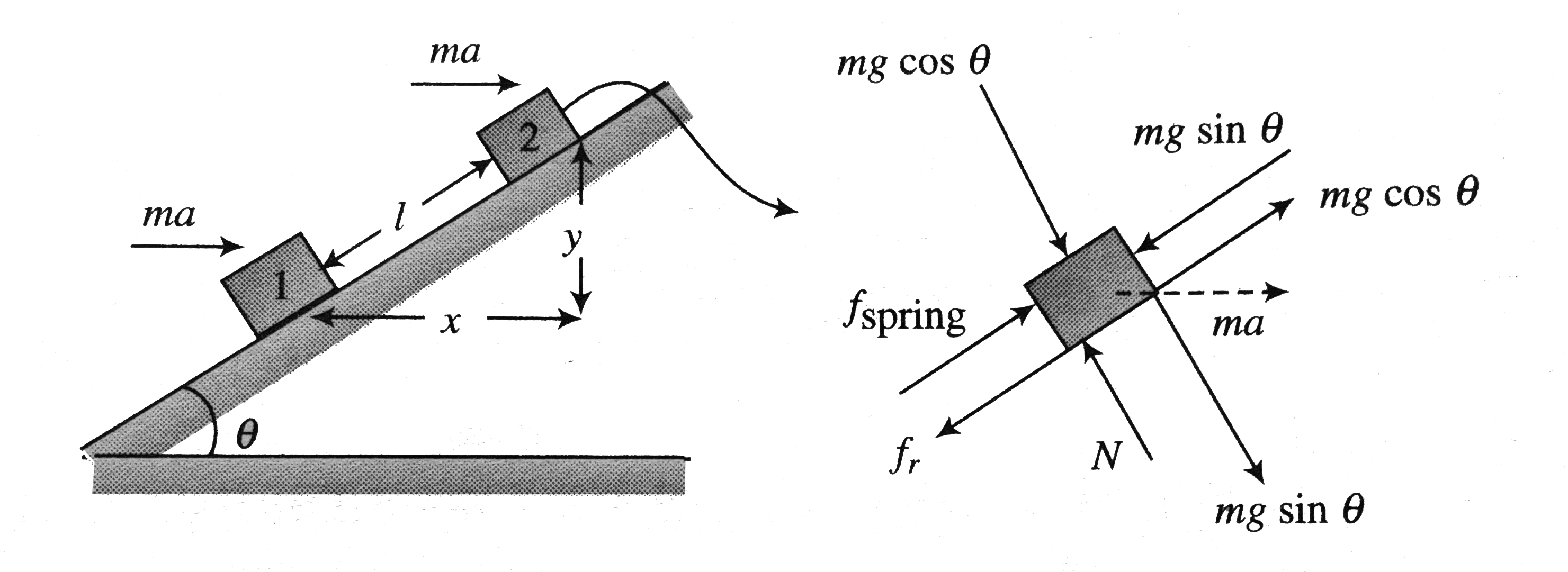
While the block is displaced from point 1 to point 2, work done by all the forces are given as follows:
Work: Wgr=−mglsinθ, Wsp=−Kl22
Wf=(μN)⋅l
N=mgcosθ+masinθ
Wf=−μmglcosθ−μmasinθ
and Wpseudo=(macosθ)l=malcosθ
W-E theorem: Summing upall workds, the total done is
Wtotal=Wgr+Wsp+Wf+Wpseudo
W=−mglsinθ1−μmglcosθ3+malcosθ4−12kl22+Fl−μmalsinθ3
Since the block was at rest at 1 and will remain at rest relative to the wedge, we can write ΔK=0 (relative to the wedge). Using work-energy theorem relative to the wedge, we have W=ΔK=0.
Substituting W=0, we have
−mg/sinθ−12kl2−μmgcosθ−μmalsinθ+malcosθ=0
l=2k[ma(cosθ−μsinθ)−mg(sinθ+μcosθ)]
=2mk[a(cosθ−μsinθ)−g(sinθ+μcosθ)]
Topper's Solved these Questions
- WORK, POWER & ENERGYBook:CENGAGE PHYSICS ENGLISHChapter:WORK, POWER & ENERGYExercise:Solved Examples
Explore 15 Videos
- WORK, POWER & ENERGYBook:CENGAGE PHYSICS ENGLISHChapter:WORK, POWER & ENERGYExercise:Exercise 8.1
Explore 25 Videos
- VECTORSBook:CENGAGE PHYSICS ENGLISHChapter:VECTORSExercise:Exercise Multiple Correct
Explore 5 Videos
Similar Questions
A block of mass m slides in right angled incliine through as shown in the figure . If the coefficient of kinetic friction between the block and the through is μk , find the acceleration of the block .

View SolutionA block on table shown in figure is just on the wedge of slipping. Find the coefficient of static friction between the block and table top.

View SolutionIf the coefficient of friction between A and B is μ, the maximum acceleration of the wedge A for which B will remain at rest with respect to the wedge is

View SolutionIf the coefficient of friction between A and B is μ, the maximum acceleration of the wedge A for which B will remain at rest with respect to the wedge is

View SolutionA block of mass m is connected with a rigid wall by light spring of stiffness k. Initially the spring is relaxed.
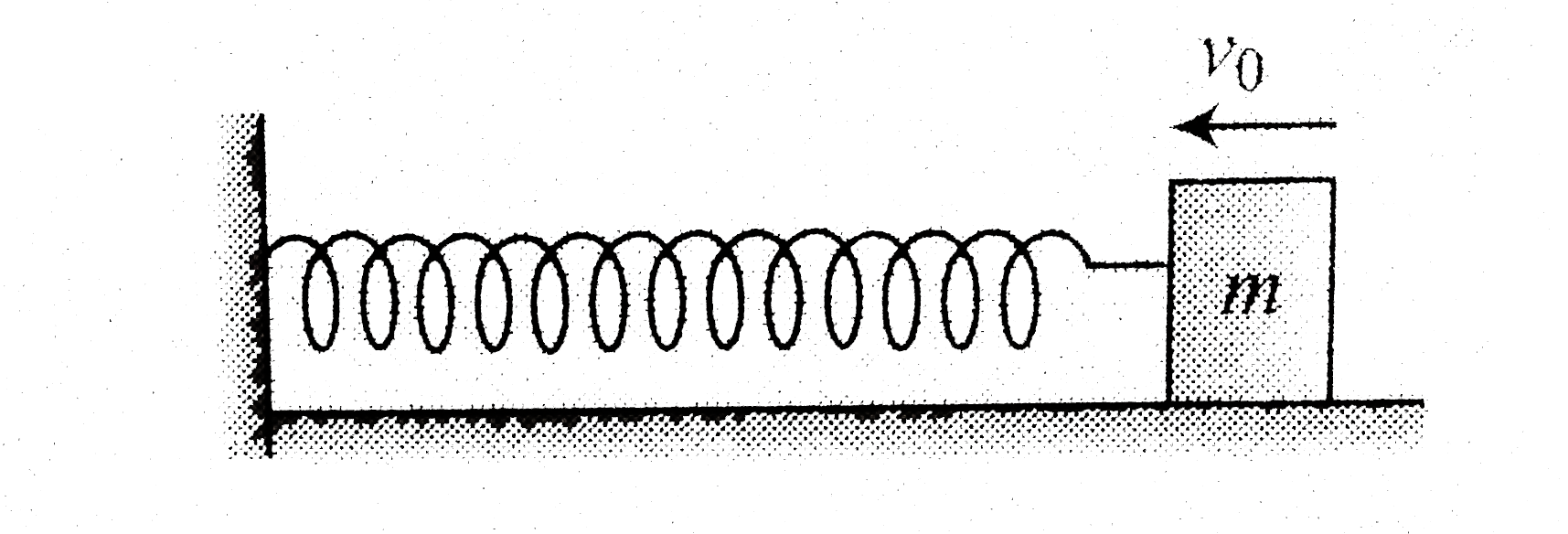
If the block is pushed with a velocity v0, it oscillates back and forth and stops. Assuming μ as the coefficient of kinetic friction between block and ground, find the work done by friction till the block stops.
View Solution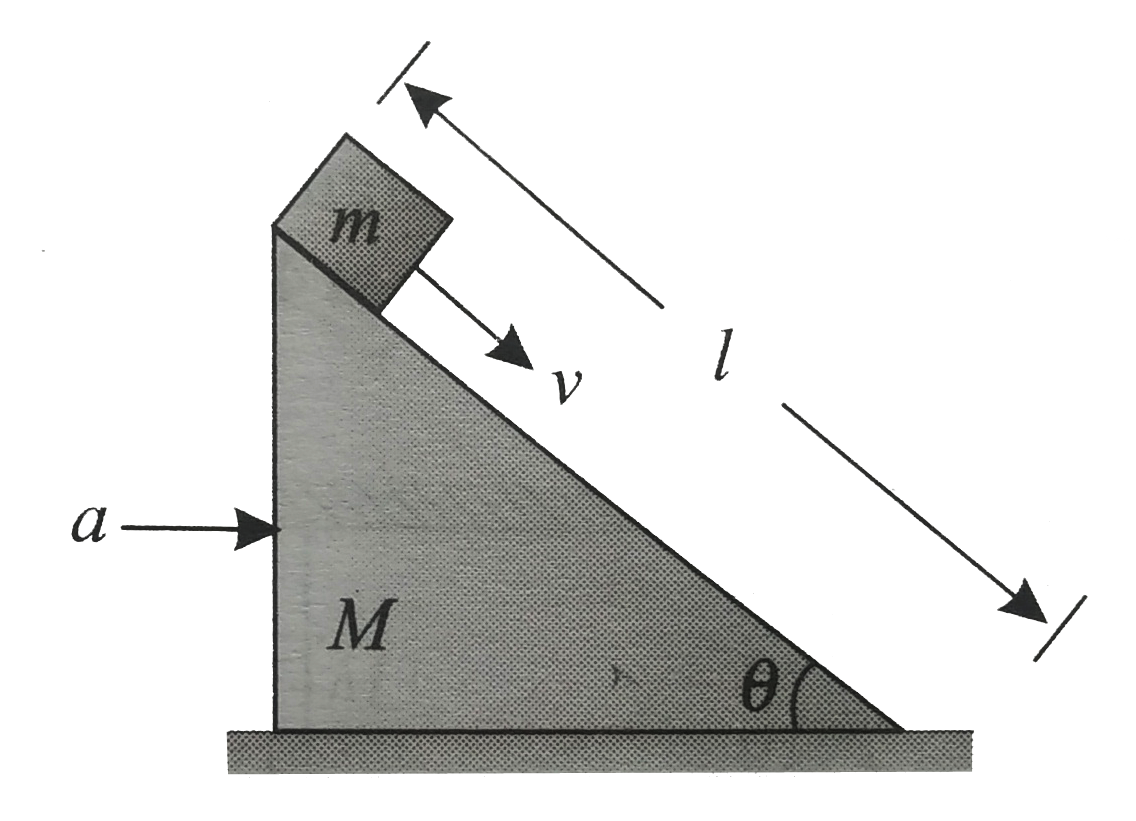
A smooth wedge of mass M is pushed with an acceleration a=gtanθ and a block of mass m is projected down the slant with a velocity v relative to the wedge.
Q. The normal reaction between wedge and block is:
View SolutionTwo blocks of mass m and 2m are arranged on a wedge that is fixedd on a horizontal surface. Friction coefficient between the block and wedge are shown . Find the magnitude of acceleration of two blocks.
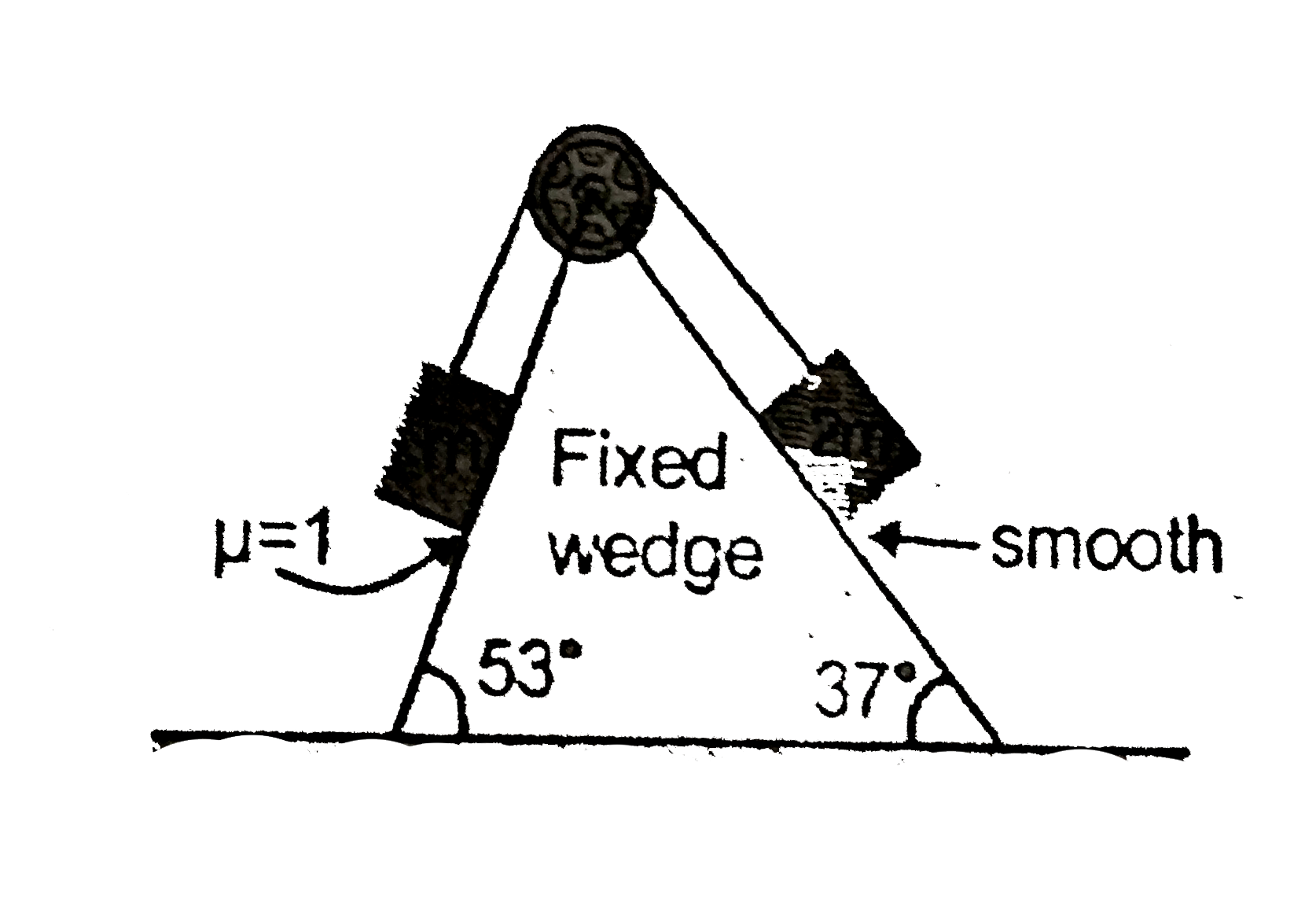
View SolutionA block of mass m is pressed against a wall by a spring as shown in the figure. The spring has natural length , l(l>L), and the coefficient of friction between the block and the wall is μ . The minimum spring constant K necessary for equilibrium is:
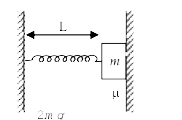
View SolutionA block of mass m is at rest on a rought wedge as shown in figure. What is the force exerted by the wedge on the block?
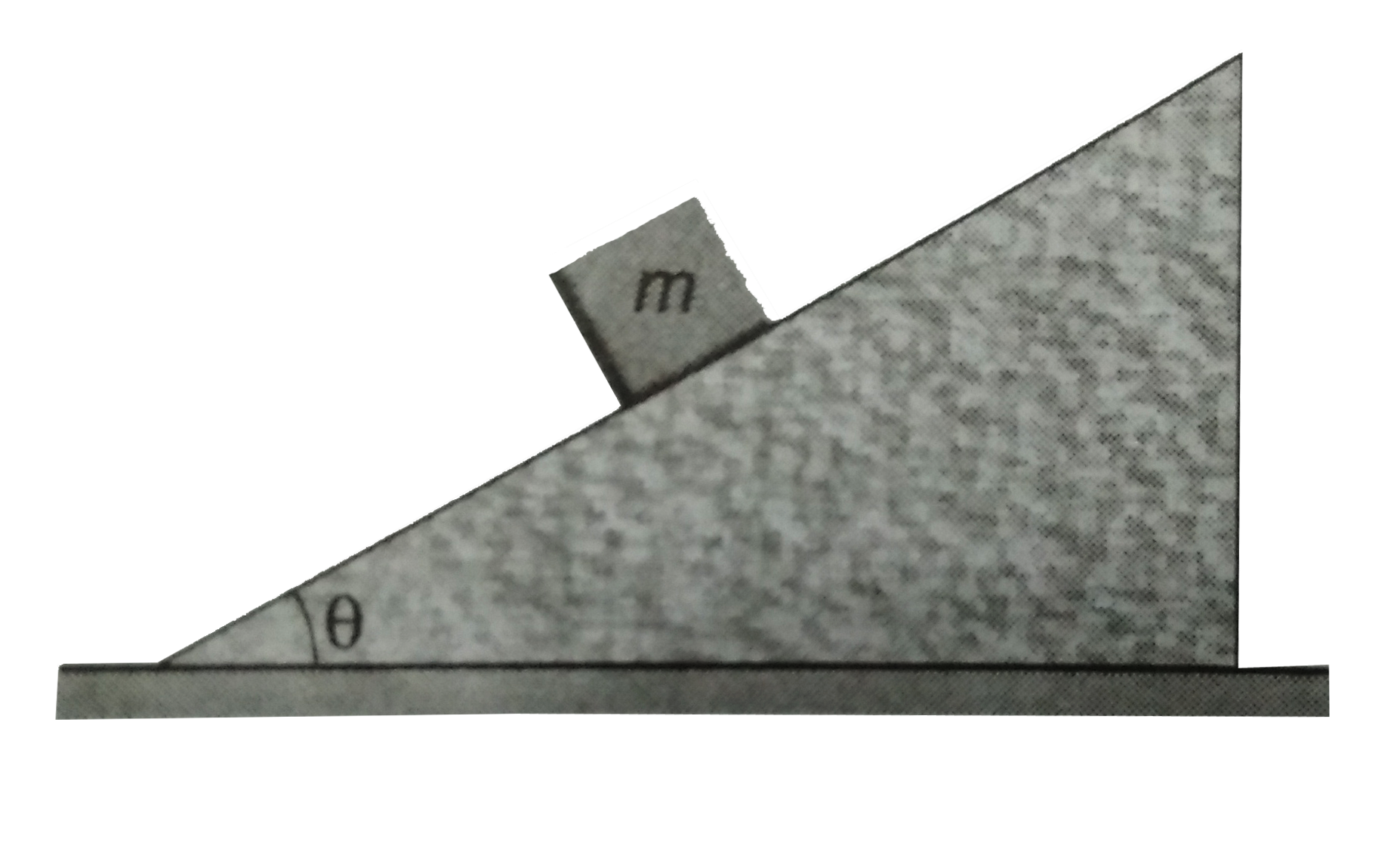
View SolutionA block of mass m connected with a smooth prismatic wedge of mass M is released from rest when the spring is relaxed. Find the angular frequency of oscillation.
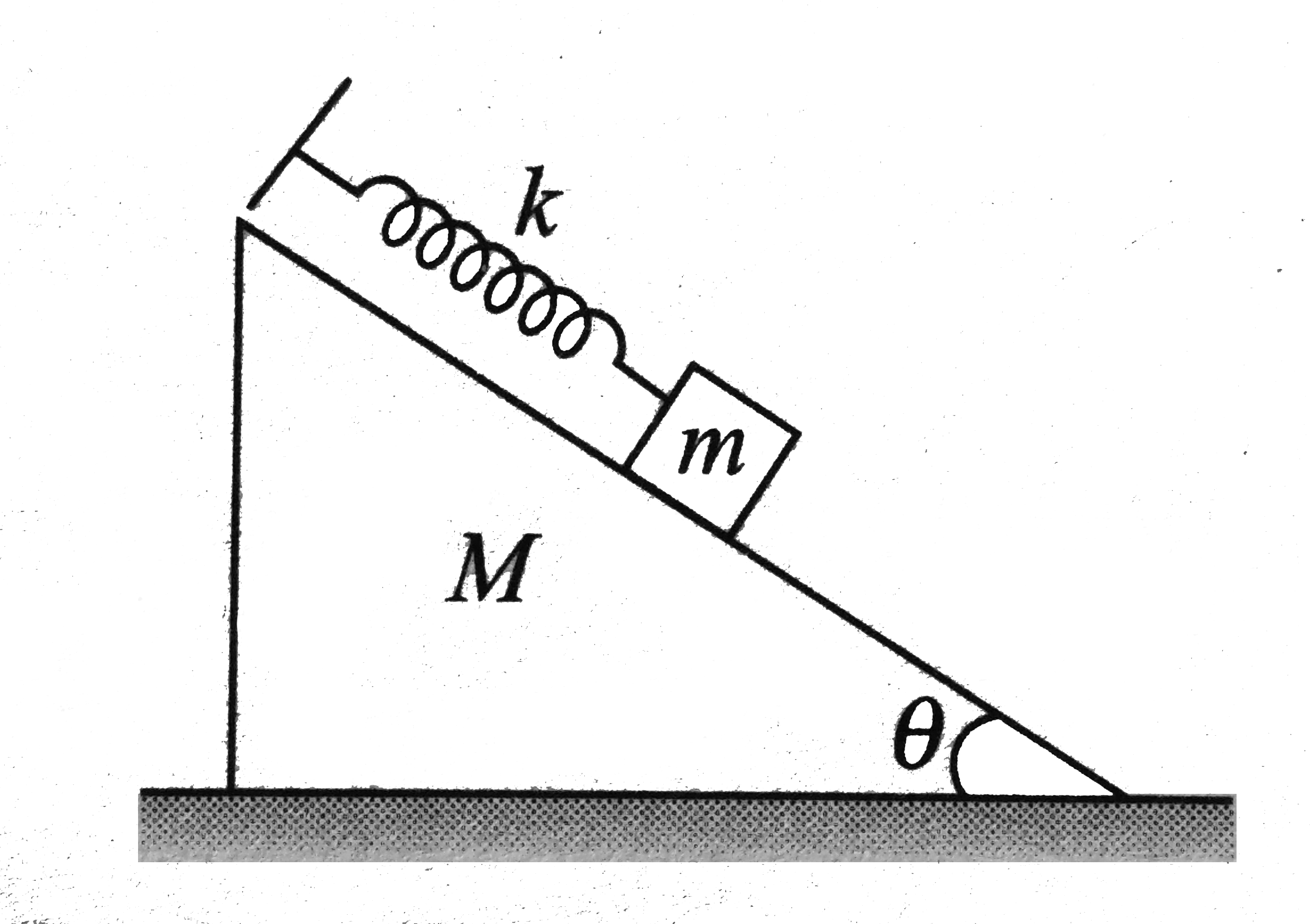
View Solution

